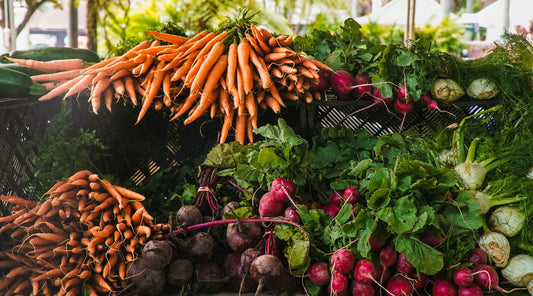There’s a special joy that comes with a bountiful crop harvested from your own garden. With every delicious bite you’ll remember the smell of rich soil, the warm sun on your skin, and – in the case of root vegetables – that satisfying feel of tugging them out of the earth.
It seems particularly hard to believe this year that Spring is just around the corner! That means it’s time to get prepared for root vegetable planting. Many root vegetables are “cold weather” crops, which means they’ll grow wonderfully when planted in early spring. We’ll dive into the three most important things you need to know before getting started. These are:
- Your USDA growing zone
- The type of vegetable you’re growing
- The soil needs of your vegetables
Determine your growing zone
You want your veggies to thrive, right? The USDA Plant Hardiness Zone Map will help you figure out which plants are most likely to do well in your local climate. The zones are based on the average annual extreme minimum temperature (now that’s a mouthful!), which means that it’s a good guide to start with, but not your sole source of truth.

Source: planthardiness.ars.usda.gov
Once you have a little more experience, you may realize that there are various microclimates within your garden. Maybe there’s a sunny corner of your courtyard that gets buffered by wind or a raised bed against a stone wall that tends to run warmer than the rest. Perhaps there’s one spot, shaded and sunken, that stays frosted over longer than anywhere else in your yard. After a few seasons of tending your garden, you’ll be able to harness these little observations and make a plan to expand your plantings beyond your local hardiness zone.
What type of vegetable have you got there?
You know you’re growing a root vegetable, so that’s a start. But even within this category, there’s quite a bit of diversity. We can break the root vegetables into two large groups: the hardy vegetables and the half-hardy vegetables.
Hardy Root Vegetables:
- Leek, kohlrabi, onion, radish, rutabaga, and turnips
- Plant these 2-4 weeks before the last spring frost in your area. These hardy vegetables can endure short freezes and thrive in cooler soils
Half-Hardy Root Vegetables:
- Beets, carrots, ginger, parsnips, and potatoes
- Plant these after the last spring frost. Their seedlings can’t survive long freeze
To more accurately determine the best planting date for your vegetables, work backwards from the first frost in your area, then subtract the “days to maturity” listed on your seed packet. Your seed package will also tell you the specific soil temperature at which your vegetable should be planted, which can be especially helpful in years with unusual frost patterns.
Know your vegetable’s soil needs
Root vegetables require loose, rich soil to thrive. Make sure all the good stuff – water, nutrients, and air – get deep into the soil by using a tiller before planting. Tilling will also loosen the soil so the roots can grow freely and deeply.
Even if you live in an area with compacted soil, you can still grow root vegetables. Add soil rich in organic matter to a raised garden bed or a berm and plant away!
Your root vegetables will require plenty of potassium and phosphorus, so make sure to fertilize accordingly. Noticing lots of leafy greens up top, but small root vegetables below? Cut back on the nitrogen next season!
Tips to growing large root vegetables
Plant your seeds 2-4 inches apart. Once your seedlings begin to emerge, you may need to thin out the patch. This will ensure your root vegetables aren’t competing for space below ground. When thinning them, cut the greens off at the base and leave the root. If you try to rip up the seedling, you risk accidentally dislodging the roots of others nearby.
Happy planting!






